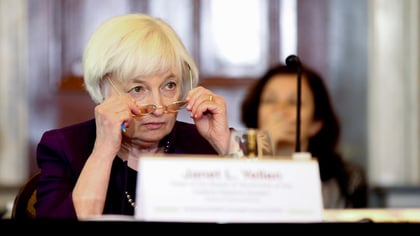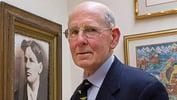Former Fed Chair Janet Yellen says the U.S. central bank needs to raise short-term rates only three more times to achieve a neutral rate that allows the economy to grow and create jobs without pushing inflation much above the bank’s 2% target.
Speaking to a room filled with financial advisors who greeted her with a standing ovation at the Schwab Impact 2018 conference, Yellen said U.S. economic growth was currently running at a pace that’s unsustainable for very long given the tightness of the labor market. “Growth needs to slow in order for economy not to overheat,” said Yellen.
“The ratio of job openings to unemployed people is the highest level in recorded history. There are more job openings than people to fill them,” and the “unemployment rate is the lowest in 50 years.”
Yellen expressed concern about potential overheating of the economy but also confidence in the ability of current Fed Chairman Jerome Powell and other Fed policymakers to slow and stabilize growth.
“That’s a very tricky business,” said Yellen, explaining that Fed policy takes time to have an impact so the Fed has to be forward-looking. Acting too slowly and falling behind the curve, however, risks having to tighten so much to cause a significant recession.
Yellen doesn’t expect a recession until at least 2020 and even then one only a mild one that’s not “deep and terrible.”
The first and only female Fed chair expects that the federal funds rate will average around 3% over the next 10 years, which translates into a real (adjusted for inflation) rate of 1%. (The current fed funds rate is set at a range between 2% and 2.25%, which after adjusting for inflation of 2% is close to zero.)
“The normal level of real rates is likely to be low and stay low,” said Yellen, adding that most economists believe the average level of rates is trending downward due to an aging population, slow productivity growth and high demand for safe assets not only in the U.S. but in other developed economies.









 October 31, 2018 at 01:07 PM
October 31, 2018 at 01:07 PM











